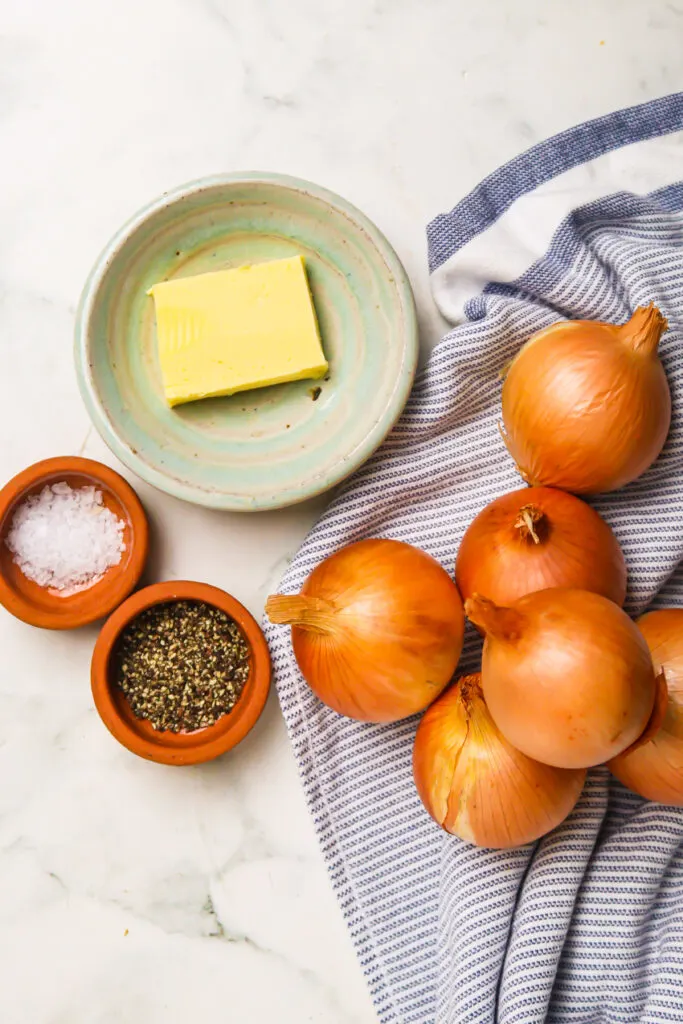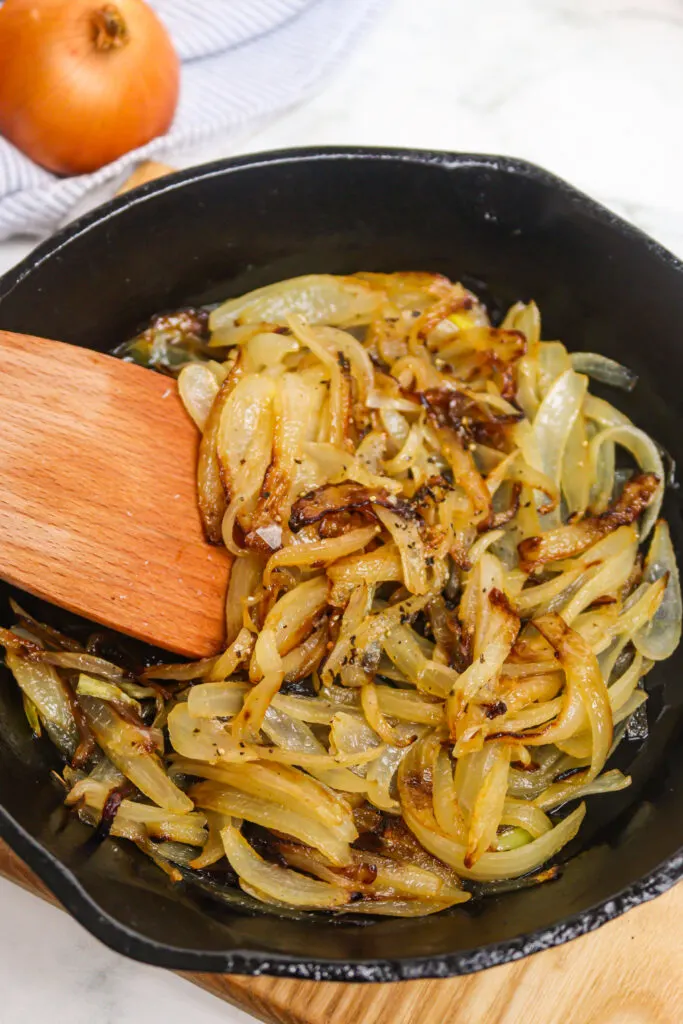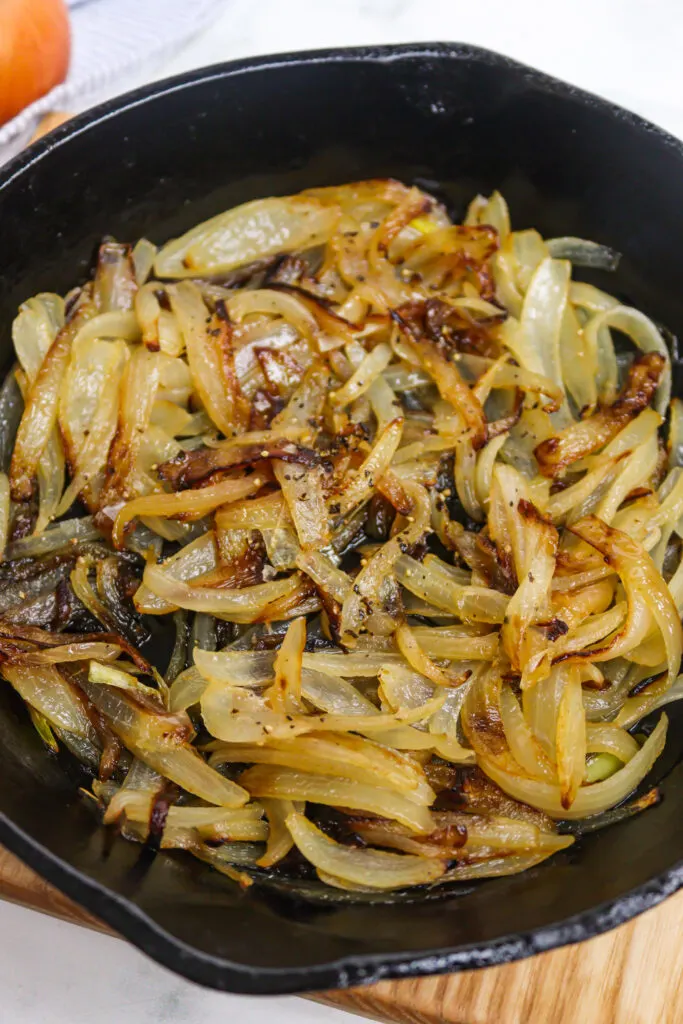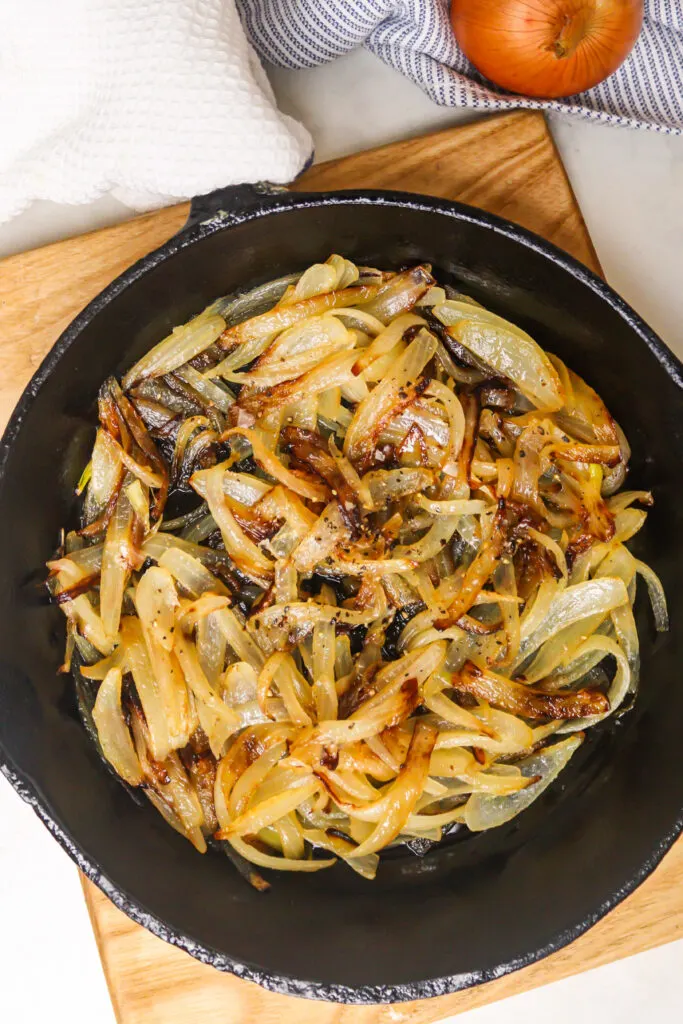Ever wondered how something as simple as sautéing onions could turn your everyday cooking into a flavor fest? Well, join me in the kitchen and we’ll explore this basic but magic-filled world of sautéing onions!

If there’s a secret ingredient to good food, it’s sautéed onions. They’re incredibly simple to make but the impact they have on your dishes is mind-blowing. Whether you’re a pro chef or one of us humble home cooks, you will rely on sautéed onions to unlock a paradise of yummilicious recipes.
In your kitchen, there will soon be a sizzling hot pan with chopped-up onions inside doing their magic and releasing that intoxicating aroma throughout the house. I love using my onions in French onion soup. They add a sweetness that came down from food heaven. And did I mention just how versatile these babies are? They go with everything — soup, salad, main, sautéed onions can jazz up anything.
Why You Should Make This Recipe
- Sautéed onions feature in dishes from around the world, like soups, sauces, stir-fries, and casseroles. Knowing how to make this simple recipe will help you out no matter which cuisines you favor.
- Sautéing onions breaks down their sugars and turns a somewhat bitter vegetable into a candy! (Well, I may be exaggerating a bit, but you get my point).
- Sautéed onions have an unmistakable scent that brings everyone to the table. It will make your mouth water while cooking them (and the mouths of your guests!)
- Sautéing is an indispensable culinary skill. If you’re not overly comfortable with it, doing it with onions is a great place to start.
Is This Keto?
Onions have 7-10 grams of net carbs per 100 grams. In the big scheme of things, this is low, though I would say this is higher than a number of other vegetables. But these sautéed onions are intended as a topping for steak or a sandwich, for example; so, given how little you will be eating, yes, this is Keto friendly. Meanwhile, butter is a good source of fat and keto friendly so no need for concern there.
Ingredients
This simple recipe is more about technique than ingredients.
- 2 large sweet onions
- 2 tbsp butter
- salt and pepper

Instructions
- Peel the onions and slice them into even pieces.
- Place a non-stick skillet over MEDIUM heat and melt the butter. Add in the onions and sauté for 2-3 minutes, then turn the heat down and cook. Stir occasionally for another 5 – 8 minutes or until the onions are translucent and soft with a light brown color.
- Add salt and pepper and remove from the pan.
Variations
- Minced garlic can also be sautéed, so that’s an option if you want some extra flavor. Just note that the minced garlic will cook faster, and when it’s too cooked, it gets bitter. So you’ll want to get the onions going and then add the garlic later.
- If you prefer the taste of olive oil, you can use that instead of butter
- Add in a little balsamic vinegar for a lovely kick. Just be sure to check the label for nutritional info, since some balsamic vinegars have a higher sugar content.
- You could use a different onion variety, too. I use sweet onions here (Vidalia and Walla Walla, to be precise) because sautéing is all about bringing out that natural sweetness. You can also use yellow or white onions to shake up the flavor profile.

Tips and Tricks
- Uniformity is key, so be sure you’re slicing those onions the same size or else they will cook unevenly.
- Dig out your non-stick skillet or your grandma’s cast-iron pan to keep the onions from getting clingy.
- Give the onions a good stir now and then while they’re cooking. You want to give them a nice, even tan without burning them.
Serving Suggestions
This is the fun part! You can eat sautéed onions as a side dish (careful not to eat too much, though, as this will ruin your keto diet) or add it to soups (this Healthy Cabbage Soup would fit the bill), sauces, stir-fries (like this Orange Ginger Beef Stir Fry), and casseroles.
You can also add them to other vegetables, like this recipe for Shaved Brussels Sprouts with Bacon and Brown Sugar, which already involves sautéing the sprouts. You can also add it as a topping for The Best Homemade Burger and add it to this recipe for Healthy Pulled Pork that can be done in a slow cooker or Instant Pot.
FAQs
Don’t forget your salt and pepper, and always taste before you serve. If you’re feeling fancy, dashes of balsamic vinegar will do wonders, too.
Caramelizing involves cooking the onions on a lower temperature for a longer period of time, which brings out their natural sugar. Sautéed onions are done over a higher temperature and a shorter period of time, which browns the outside. (I admit that I sort of walk the line between the two in this recipe.)
You’ll need to get familiar with how your pans and stove heat up. It’s better to have the heat too low than too high (though, as I note below, too low can lead to limp lumps). Consistency is what you’re after, so stir those slivers now and then to make sure every piece gets its fair share of heat.
You can replace the butter with olive oil, canola, veggie broth. Every switch will give a slightly different flavor and texture, so go for what ticks all the boxes for your taste and your diet.
I know my onions are ready when they’ve gone tender and glassy with a lovely golden-brown tan. This usually takes about 7 to 10 minutes, depending on your heat and how you’ve sliced them. Keep an eye on them and don’t be shy with the stirring spoon.
There could be several reasons. You could be overcrowding the pan, turning your sautéing into a steam fest instead. Also, check that you have the heat at the right temperature (MEDIUM). If the heat is too low, the onions don’t get caramelized properly and they turn into a limp lump.

How to Store Sautéed Onions
Store the onions in an airtight container or resealable bag and keep them in the fridge if you’ll be using them often. If not, you can always freeze them; just put your airtight container or freezer-safe resealable bag in the freezer, where the onions will stay flavorful for up to three months. A little tip: If you’d like to keep them in smaller servings, put the portions in ice cube trays, silicone molds, or smaller bags.


How to Sauté Onions
Ingredients
- 2 large sweet onions
- 2 tbsp butter
- salt and pepper
Instructions
- Peel the onions and slice them into even pieces.

- Place a non-stick skillet over MEDIUM heat and melt the butter. Add the onions and sauté for 2-3 minutes, then turn the heat down and cook, stirring occasionally for another 5 – 8 minutes or until the onions are translucent and soft with a light brown color. Add salt and pepper and remove from the pan.

Notes
- There could be several reasons why your onions are soggy. You could be overcrowding the pan, turning your sautéing into a steam fest instead. You need to give your onions some space in the pan. Also, check that you have the heat at the right temperature (MEDIUM). If the heat is too low, the onions don’t get caramelized properly and they turn into a limp lump). Oh, and don’t forget to stir!
- Caramelizing involves cooking the onions on a lower temperature for a long period of time. Doing so brings out their natural sugars. Sauteed onions are done over a higher temperature and a shorter period of time. This browns the outside. I admit that I sort of walk the line between the two in this recipe. The instructions point to sautéed onions but the finished taste and texture describe caramelized onions.
Nutrition




